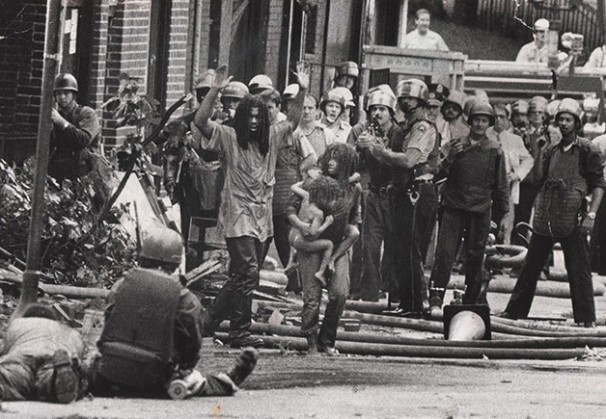
Jason Osder’s documentary “Let the Fire Burn” takes a real event and edits it into a wildly compelling and emotional story, which creates an honest, raw film portrayal. In most documentaries, emotion and honesty seem to be at odds with each other. But in “Burn,” they flow together more cohesively than most fictional narrative films.
This success comes largely from Osder’s decision to use archival footage. The lack of filmmaker commentary allows the viewer to sink into the facts of the story, all while being wonderfully manipulated by the masterful, yet subtle, editing.
The film documents a 1985 police bombing in Philadelphia, which the police department used to evict the radical group MOVE from their homes. Dropping the two bombs led to a fire that killed six adults and five children and burned down 60 other homes, in addition to the targets. The film is bookended and guided by an interview with the child who survived the bombing, along with a mix of news and courtroom footage.
“Burn” does an impressive, thorough job of portraying the entire situation without passing judgment. The film was made to examine how such an atrocity could occur, and it searches for the people potentially at fault. But calling a tragedy a tragedy is not the film suddenly demonstrating a bias — it is simply truthful.
The film divides its time between explaining why the police and government officials of Philadelphia were concerned with MOVE and questioning the morality of their motives and actions. As a result, two people could leave the theater thinking two entirely different things — one may think that Osder’s film sympathizes with the police, while another may think the filmmaker was suggesting that the police’s behavior was caused by racism and extreme prejudice. Like any good documentary, “Burn” doesn’t give answers — it asks questions.
The editing is also superb, both in pacing and in content. The film moves like a taut courtroom drama, unraveling the full story at just the right speed to both keep the audience guessing while never becoming boring for them. The fact that this is achieved all through archival footage is miraculous to say the least.
Like this year’s “Fruitvale Station,” viewers will leave “Burn” feeling disturbed, and they will find themselves thinking about events that could be interpreted as racially motivated. These issues of race, class and violence are ones that demand discussion. If nothing else, “Let the Fire Burn” is a perfect instigator of such discussion.
A version of this article appeared in the Wednesday, Oct. 2 print edition. Drew Gregory is a staff writer. Email him at [email protected].











































































































































